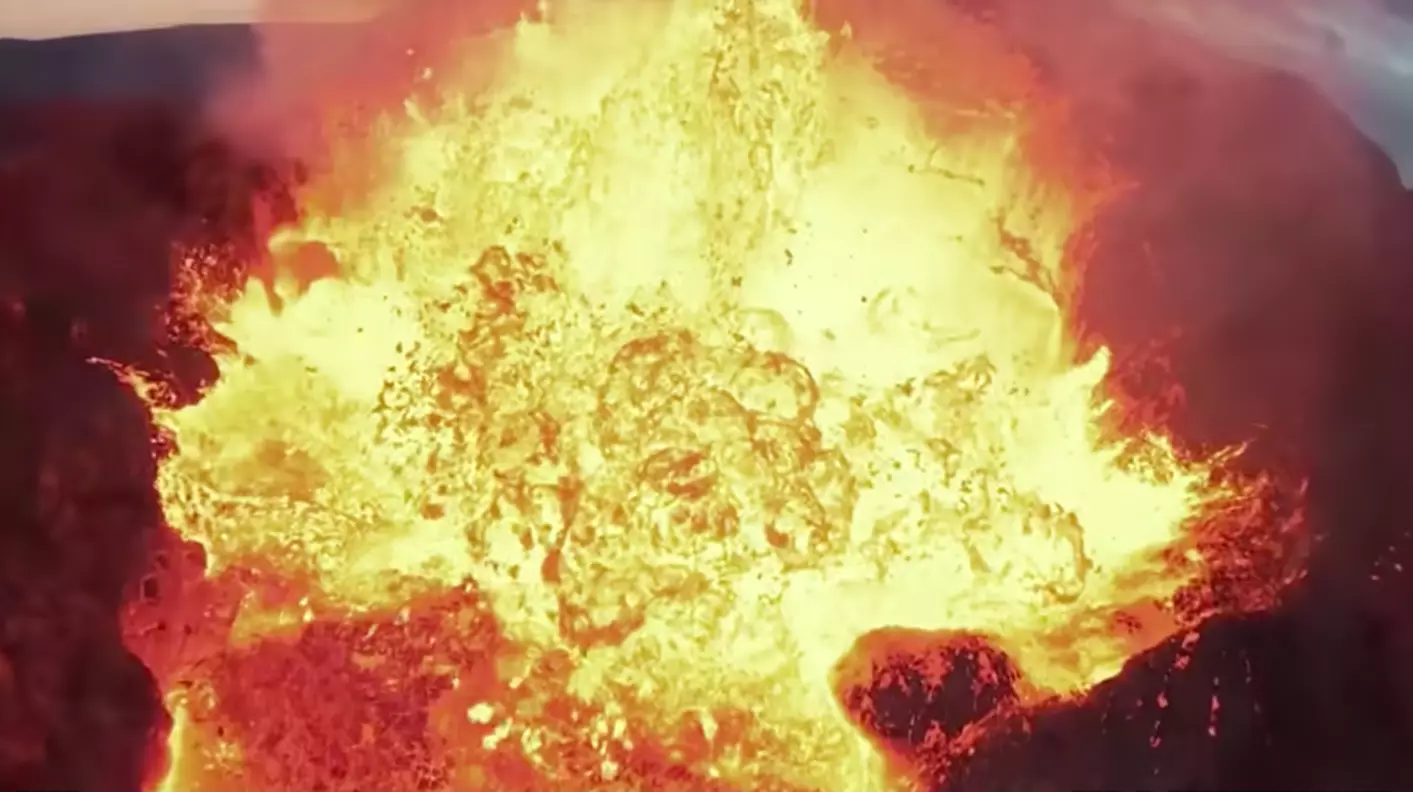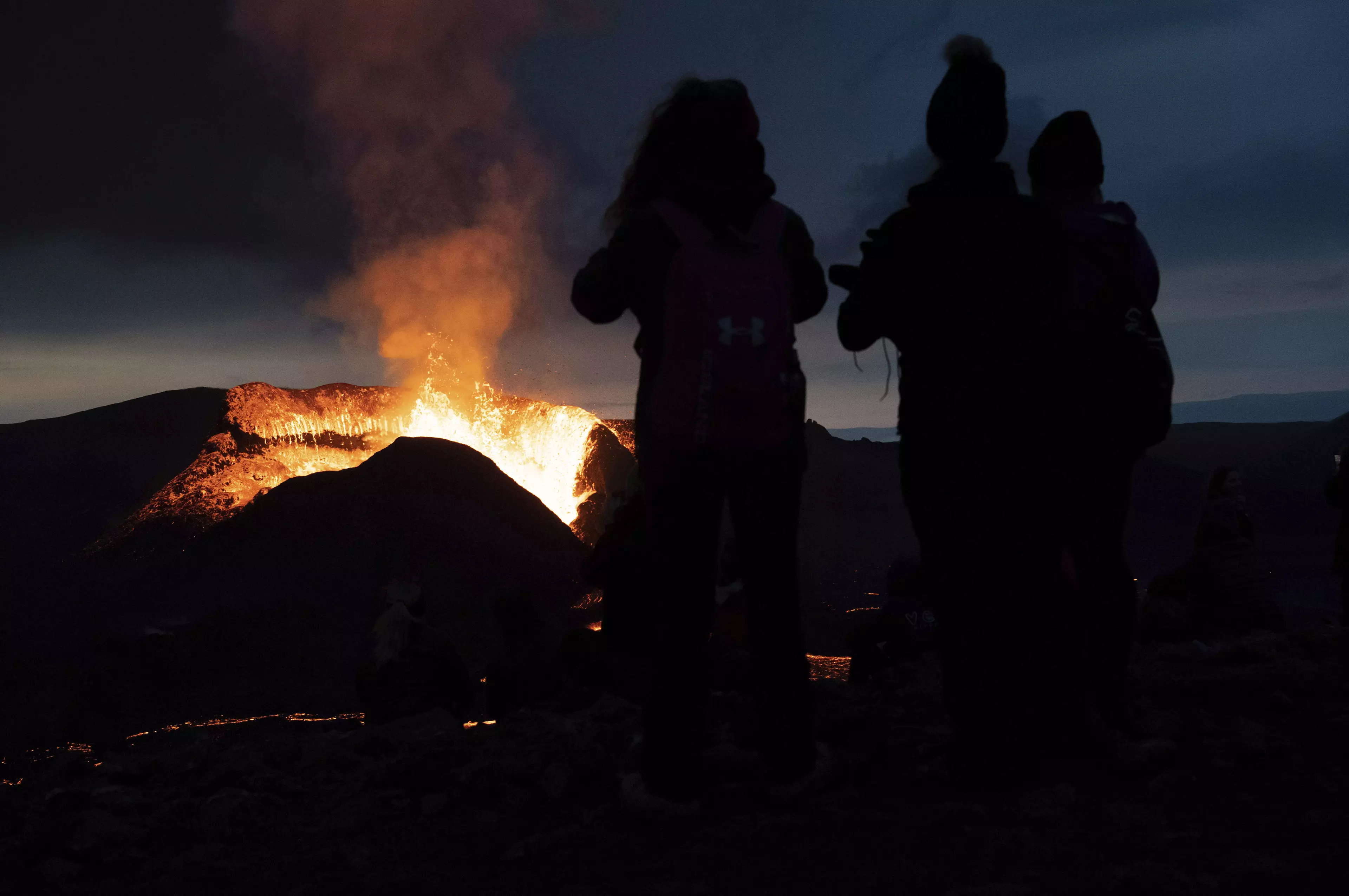
The moment a drone crashed into an erupting volcano in Iceland was caught on camera.
As you can see in the dramatic footage above, the first-person view flying (FPV) drone glides over the top of the lava river, attempting to get as close as possible to the surface.
Advert
But at one point, it gets a bit too close to the Fagradalsfjall volcano, and pays the ultimate price.
As the drone swoops down, the geyser-like shoots of lava get closer and closer, before they eventually engulf the camera, and the signal is lost.
Viewers of the video, which was captured by Joey Helms, and posted on YouTube, were impressed with the unique shot.
One wrote: "That has to be the best shots I've seen. Shows the insane massive amounts of lava pouring out! Truly EPIC!"
Advert
A second said: "ABSOLUTELY INCREDIBLE! Definitely one of the most extraordinary drone shots I've ever seen!"
Another wrote: "This shot worth every penny spent on the drone. Wow."
Speaking about capturing the footage, Joey said: "I'm actually new to FPV [First Person View] drones, and in my defence people crash and lose them all the time because you fly them completely manually without any GPS support.

"Around the volcano where you have the hot gasses emitted, which cause turbulence all around it, and hot rocks raining onto you, flying these things is even more tricky.
Advert
"I tried to push it as much as I can to get spectacular footages, but I reckon I pushed it a little too far.
"It was quite a shocking moment for sure, but the silver lining is that we get some amazing-looking footage."
The volcano, which is located in the south-west of Iceland, began erupting in March, having laid dormant for more than 900 years.

Advert
The fissure is about 500-700 metres long at Fagradalsfjall on Reykjanes peninsula, approximately 30km south-west of the country's capital Reykjavik.
The Iceland Meteorological Office (IMO) said the eruption of Fagradalsfjall began at around 8.45pm GMT on Friday 19 March.
It was then confirmed via satellite imagery and webcams.
Several hours previously, a magnitude 3.1 earthquake was recorded 1.2km from Fagradalsfjall.
Advert

According to Reuters, four hours after the initial eruption - the first on the peninsula since the 12th Century - lava covered around one square kilometre, the equivalent of nearly 200 football fields.
Rannveig Gudmundsdottir, a resident in the town of Grindavik, only 8km from the eruption, told the news agency: "I can see the glowing red sky from my window.
"Everyone here is getting into their cars to drive up there."
The coastguard helicopter was sent to survey the area, sending the first image of the eruption.
Iceland is used to experiencing frequent tremors because it straddles two tectonic plates, which are drifting in opposite directions to each other.
However, in March, the country has recorded more than 40,000 earthquakes - marking a huge leap from the 1,000-1,300 earthquakes registered each year since 2014.
Featured Image Credit: Joey HelmsTopics: Interesting
